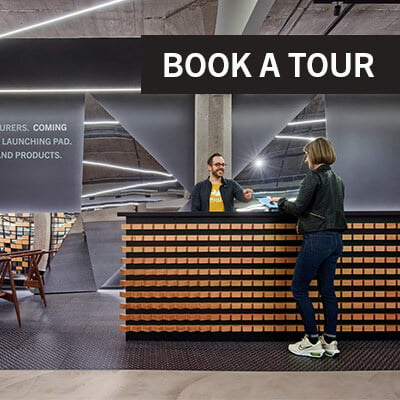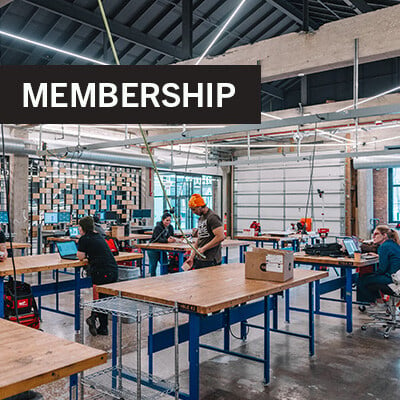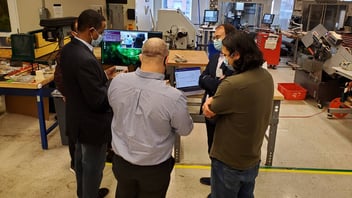Launch-Ready Marketing for Hardtech Startups: A Smarter Way to Start
Most hardtech founders are laser-focused on perfecting their product — the prototype, the design, the supply chain. But even the most innovative idea won’t grow if no one knows about it.
Marketing for an early-stage hardtech startup doesn’t have to mean big budgets or flashy campaigns. It’s about clarity: knowing who your customers are, what problem you solve for them, and how to reach them in a way that earns trust.
That’s the principle behind the mHUB’ workshop: “Launch Ready Marketing – Building Your Minimum Viable Marketing Plan.”
In this article, you'll find insights from this session that will help you define your brand, connect with your audience, and build a strong marketing foundation.
Step 1: Build Your Message House
Before choosing a logo, posting on LinkedIn, or running ads, founders need a clear and repeatable story. Consider this framework the Message House — a simple way to organize how you talk about your company.
Here’s how it works:
- Roof (Purpose): The big “why.” What future are you helping your customers create?
- Walls (Pillars): Three key differentiators that make your solution uniquely valuable.
- Foundation (Proof): Real evidence — customer insights, data, or experiences that back up your claims.

For example, the mHUB Message House might look like this
Roof: Accelerating hardtech innovation in the U.S. at the intersection of where deep tech, sustainability, and advanced manufacturing are converging because the nation's resilience, prosperity, and security depends on it.
Walls: Prototyping labs embedded into a deep ecosystem that supports lab to market; access to venture capital through mHUB Ventures; centrally located in Chicago with access to talent, research institutions, customers, transportation, affordable cost of living, and more.
Foundation: Over 500 startups supported, $2B raised, 54 investments, and 250+ products brought to market.
This simple structure forces clarity. It helps every founder — and every team member — articulate what the company does, why it matters, and how it’s proven.
Most marketing problems start as focus problem — you can be everything to everyone. Pick your most important brand promises, and once your Message House feels solid, test it quickly — pitch it to a customer, investor, or mentor and watch where they lean in to validate your positioning.
Step 2: Choose Fewer, Better Channels
Good marketing isn’t about being everywhere. It’s about being in the right place at the right time.
Start small and deliberate. Pick:
- One channel for visibility — where your target audience already spends time (e.g., LinkedIn, a trade publication, or in-person events).
- One channel for conversion — where interest becomes action (usually a simple landing page, email signup, or demo request form).
Everything else can wait. Two channels executed well are more powerful than five run inconsistently.
Step 3: Turn Every Action into a Story
Every founder activity — a test, demo, or partnership — can be turned into a marketing moment.
- Share learnings from pilot programs.
- Highlight customer feedback or early traction.
- Post behind-the-scenes progress on product development.
- Record a short video explaining why you’re solving this problem.
The goal isn’t perfection. It’s consistency.
You don’t need a content calendar; you need proof of progress that reinforces your Message House every time you show up online or in person.
There are two main challenges hardtech startups face in storytelling:
- The "we're not ready" syndrome. The product isn't ready to be shown. There are trade secrets that are too risky to share. There isn't anything important to say until this one feature, investor, or milestone comes through. You must break out of the "we're not ready" syndrome and find ways to share your perspective, experience, and industry insight in ways that don't compromise IP.
- One of the easiest ways to break out the of "we're not ready" syndrome is to focus on the people at your startup. But that's the second challenge - identifying someone who is a good consistent spokesperson for your company. When you make initial messaging about the founder journey, day in the life, and team expertise, you build trust, brand personality, and following because people like people.
Be honest with yourself in how you will address these challenges. If you cannot address them, adjust the expectations of how far your initial messaging will reach until you can break through these barriers.
Step 4: Measure What Matters
Forget complicated analytics dashboards. At this stage, founders just need to track a few key signals:
- Awareness: Are the right people finding you? Website traffic, event signups, new followers.
- Engagement: Are they paying attention? Email opens, comments, replies, time spent on content.
- Conversion: Are they taking the next step? Demos, pilots, or partnership requests.
- Learning: Are you improving each cycle? Faster customer responses, better leads, stronger feedback.
And because you're a hardtech founder, you know that data doesn't mean anything in isolation. Ask your favorite GenAI model for a simple excel spreadsheet where you can track a handful of key marketing metrics month-to-month. Update and look at trends monthly. If something works, do more of it. If not, adjust. The goal is steady improvement, not perfection.
Pro tip: Pick one clear metric per month — for example, “five qualified demos” — and measure everything else against that goal to test a new marketing initiative.
A Mindset Shift, Not a To-Do List
Early marketing success comes from discipline, not volume. A founder who tests, measures, and communicates consistently will outpace one who waits for the “perfect campaign.”
Everything costs either time or money. The key is knowing where each hour and dollar will go the farthest.
For more insights on how to move from prototype to go-to-market strategy:
-
Explore mHUB workshops and events: mhubchicago.com/events
-
Subscribe for updates: mhubchicago.com/subscribe
-
Consider joining the mHUB community: mhubchicago.com/apply-to-be-a-member





